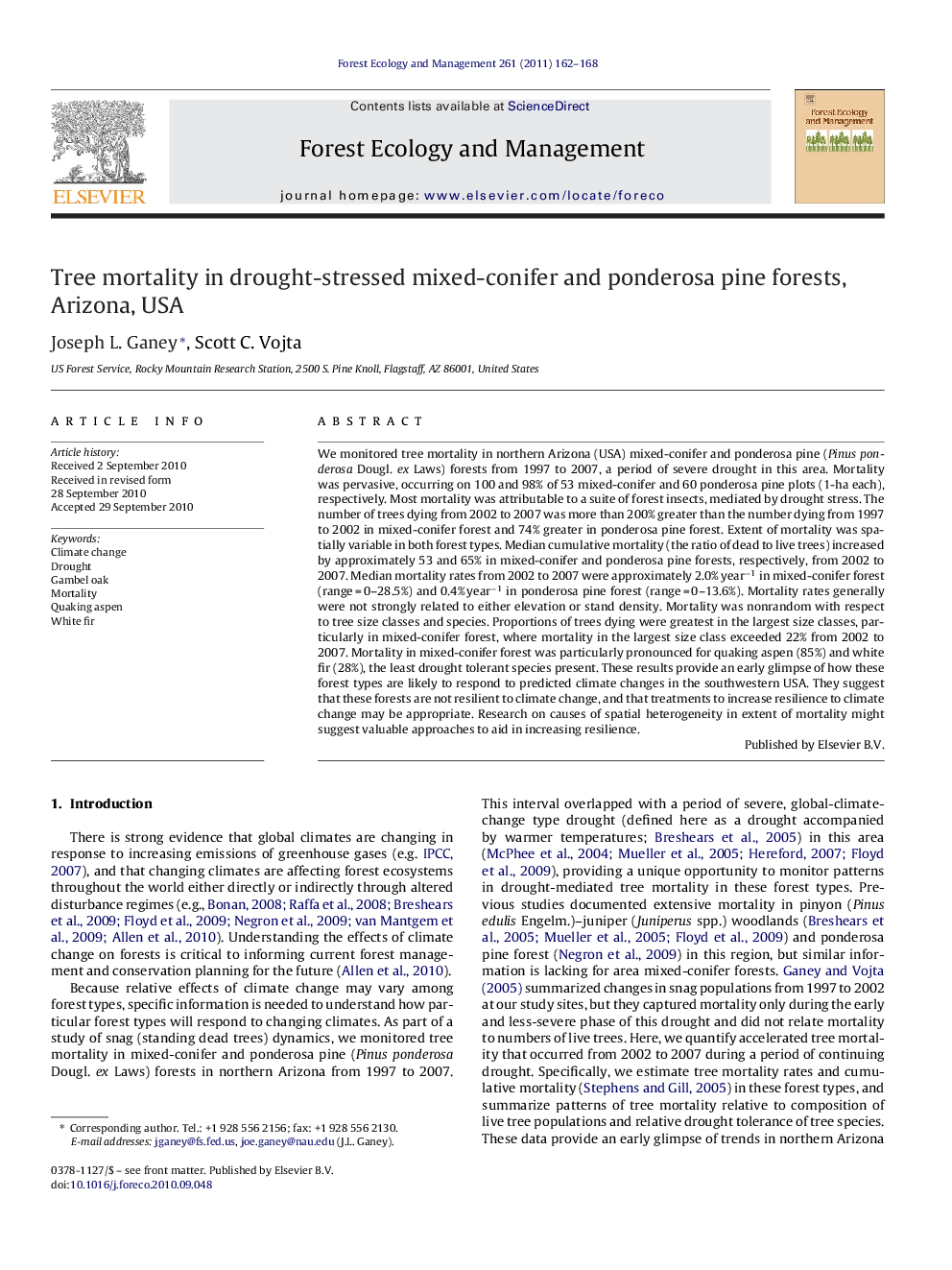| کد مقاله | کد نشریه | سال انتشار | مقاله انگلیسی | نسخه تمام متن |
|---|---|---|---|---|
| 88138 | 159285 | 2011 | 7 صفحه PDF | دانلود رایگان |

We monitored tree mortality in northern Arizona (USA) mixed-conifer and ponderosa pine (Pinus ponderosa Dougl. ex Laws) forests from 1997 to 2007, a period of severe drought in this area. Mortality was pervasive, occurring on 100 and 98% of 53 mixed-conifer and 60 ponderosa pine plots (1-ha each), respectively. Most mortality was attributable to a suite of forest insects, mediated by drought stress. The number of trees dying from 2002 to 2007 was more than 200% greater than the number dying from 1997 to 2002 in mixed-conifer forest and 74% greater in ponderosa pine forest. Extent of mortality was spatially variable in both forest types. Median cumulative mortality (the ratio of dead to live trees) increased by approximately 53 and 65% in mixed-conifer and ponderosa pine forests, respectively, from 2002 to 2007. Median mortality rates from 2002 to 2007 were approximately 2.0% year−1 in mixed-conifer forest (range = 0–28.5%) and 0.4% year−1 in ponderosa pine forest (range = 0–13.6%). Mortality rates generally were not strongly related to either elevation or stand density. Mortality was nonrandom with respect to tree size classes and species. Proportions of trees dying were greatest in the largest size classes, particularly in mixed-conifer forest, where mortality in the largest size class exceeded 22% from 2002 to 2007. Mortality in mixed-conifer forest was particularly pronounced for quaking aspen (85%) and white fir (28%), the least drought tolerant species present. These results provide an early glimpse of how these forest types are likely to respond to predicted climate changes in the southwestern USA. They suggest that these forests are not resilient to climate change, and that treatments to increase resilience to climate change may be appropriate. Research on causes of spatial heterogeneity in extent of mortality might suggest valuable approaches to aid in increasing resilience.
Research highlights▶ Forests in northern Arizona experienced extensive and accelerating tree mortality. ▶ Most mortality was insect-related but mediated by drought conditions. ▶ Mortality was nonrandom and is affecting species and size composition. ▶ Mortality disproportionately affected the least drought-tolerant species. ▶ Observed patterns likely indicate how these forests will respond to climate change.
Journal: Forest Ecology and Management - Volume 261, Issue 1, 1 January 2011, Pages 162–168